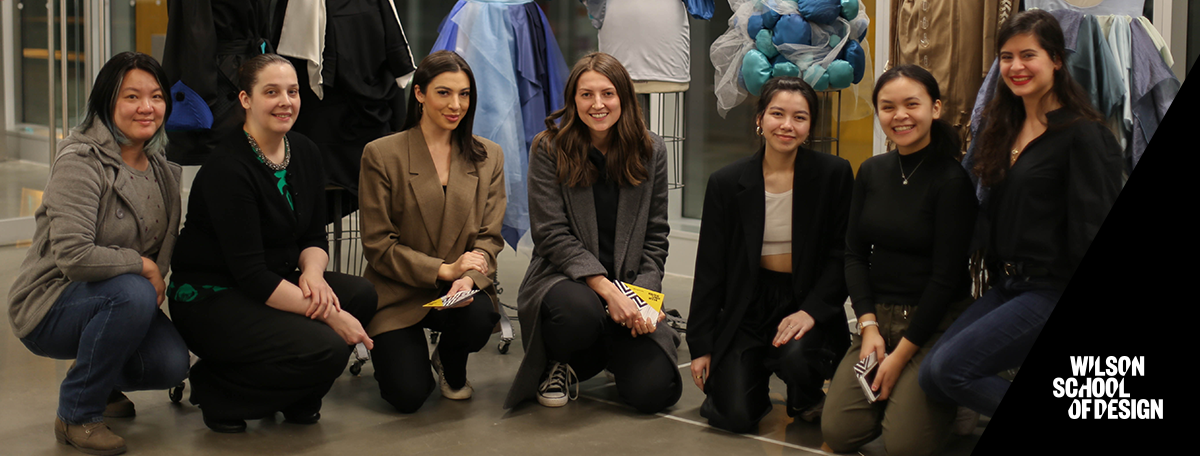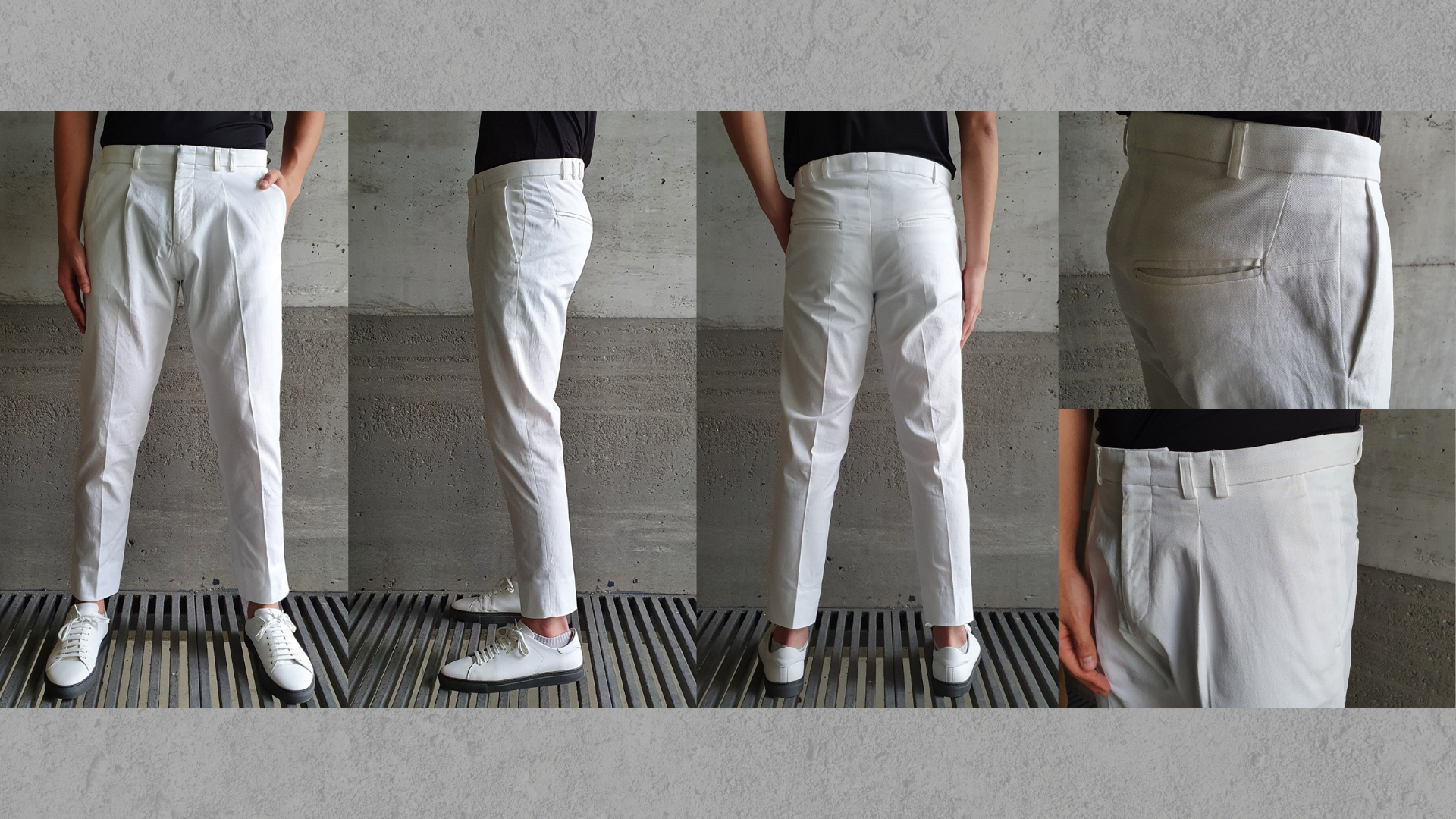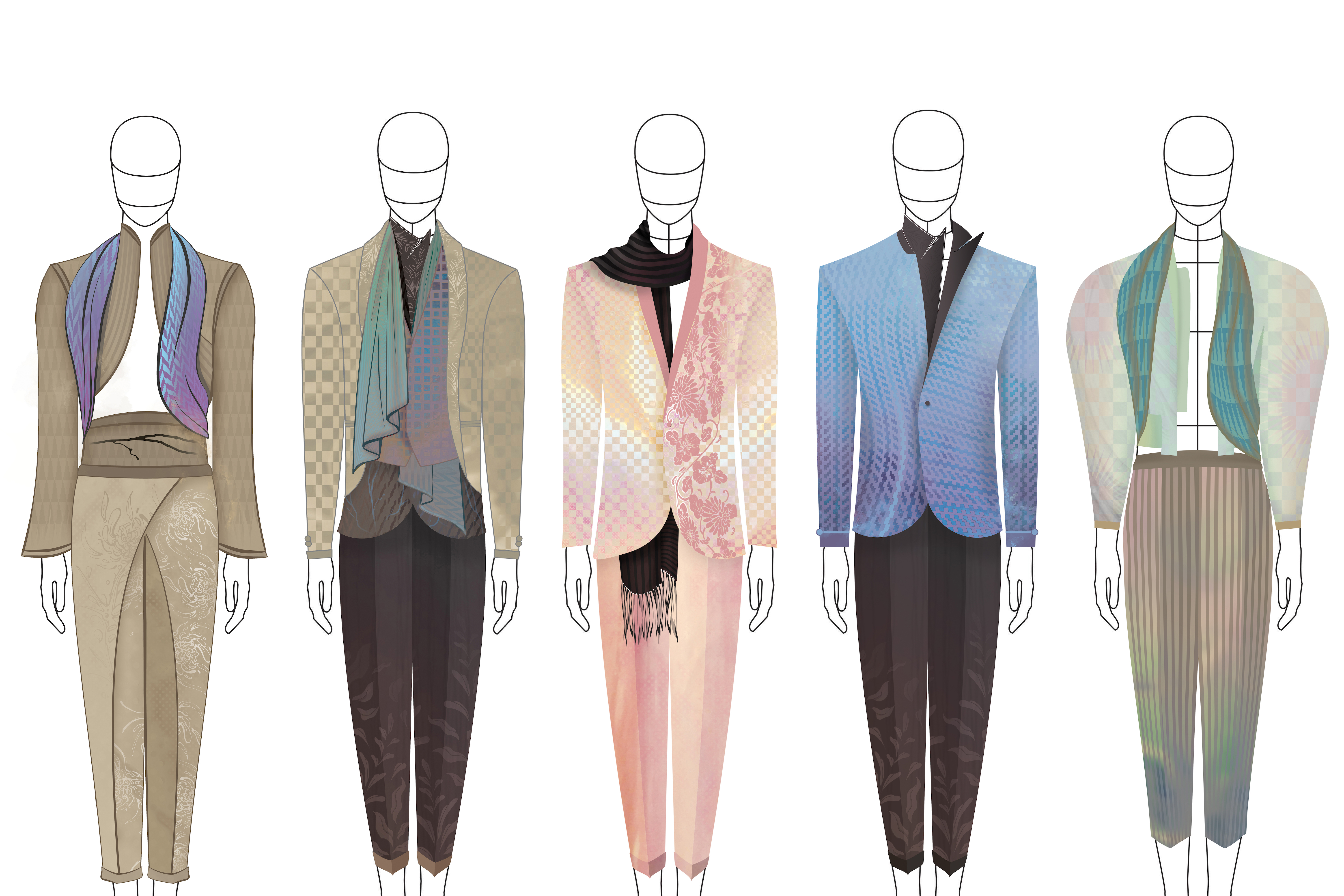
Our students are innovative, forward-thinking, boundary-pushing, conscientious global citizens. They hail from all over the world, and each one brings a unique perspective that contributes to the community fabric of our program. Our students support each other, learn from each other's mistakes and revel in each other's successes. The friendships made in our program often last for years after graduation and occasionally lead to business collaborations and successful endeavours.
Our students will often invest their time and talents throughout the years in numerous volunteer-based projects, and our program is known for producing graduates who believe deeply in giving back.
Please find out more about what our Fashion and Technology and Wilson School of Design students are doing by following us on social media. You can find us on Instagram @WilsonDesignKPU, Facebook: Wilson School of Design at KPU.
Below are a few of our alumni and what they have to say about their time in the program.
Zachary Chao
My experience attending the program can be described as eye-opening, fruitful, and definitely educational. From the Fashion & Technology program, I learned various aspects of what the fashion industry offers. Design principles, production operations, history and forecasting, and textile studies are some areas that I explored. In addition, I learned to use computer software and programs of the industry standards in terms of technologies, and I also learned to operate industrial machines for garment construction.
As a 2nd year student entering the 3rd year, I am eager to improve and expand my skillsets and knowledge continuously. I often feel I have the creative freedom to express my ideas, while instructors provide constructive criticisms to make my visions more feasible. My favourite quality of our program has got to be the close-knitted community we have built. Contrasting to a competitive nature, students attending this program help and nurture each other. The mentality of "growing together as a whole" is the most rewarding part of the program.
3 tips for someone considering pursuing fashion education (this might include a tip or two for putting together a portfolio)
- When putting together your portfolio, make sure to showcase your creative process that leads to the outcome. While the end product is important, it is essential to communicate the journey from point A to point B.
- It is okay if the pieces in your portfolio are not perfect; it shows that there is always room for growth. What's truly important is that you can identify the mistakes and develop a potential solution to the problem.
- Understand that becoming a "fashion designer" is not the only career path in the field of fashion. There are many more jobs available in the industry, such as a pattern maker, a colourist, a fashion forecaster, a textile developer, a print designer, a seamster, and more, to name a few. Remember, the fashion industry is one of the biggest industries in the world, and there will always be a spot for you!
Instagram: @zachary_chao_

Sunita Crutch
I started the program in the middle of the Covid-19 pandemic. As teachers worked hard to become accustomed to the new ways of online teaching, so did the students. I was happily surprised that I felt my education was not affected by an online setting, and I could still learn a lot. My classmates were very supportive of one another, and we helped each other out as much as we could. Having the class sizes so small, it feels like I am getting the best out of my education. I have learned so much about drafting patterns, overall sewing skills, designing computer software, and thinking like a designer. This was only my first year! I cannot wait to start my second.
Tips and Tricks
- Try to get an organized schedule. In my first year, I lacked sleep, and sleep is IMPORTANT. As a result, I struggled a bit to manage my time. I recommend not procrastinating, working on your projects early and having a good sleep schedule for a stress-free year.
- Befriend your classmates and don't be afraid to ask questions. Your profs are there to help, and they are very supportive. They are your best resources.
- At the beginning of the semester, have a folder online and physically for all of your work to have for your future portfolio. It is better to be organized now than later.
Student work examples:
Paula Burrows
I had often fantasized about going back to school to study fashion design, but it felt too indulgent a choice as I was in my thirties. Eventually, my curiosity got the better of me, and I applied to Fashion & Technology Program at KPU. This program hit me like a tornado. Suddenly, I was drawing, sewing, painting, researching, and learning the Adobe Suite with every second of my time. I am not sure how much sleep I got in my first year. The teachers are interesting and inspiring and give you fantastic boundaries within which to experiment. My problem-solving skills have definitely gotten a workout in patternmaking. The fashion and technology program at KPU is a truly safe space to fail your way to success. I am not sure any of my sewing projects succeeded this year, but I’ve learned so much! The learning I have done in this program has erased my former concerns that I was choosing to study a field that would not lead to employment. In fact, our teachers are constantly pushing us to learn and grow in ways that make it certain that we will find jobs in our fields of interest within the fashion industry.
Tips:
- I highly recommend taking your non-fashion requirement courses during the summer months or before starting the Fashion program.
- Resign yourself to the fact that you will not be able to work a full-time job. Embrace it, and you will be busy drawing, sewing, and memorizing endless facts about textiles.
- My portfolio was simple; I certainly had not spent any time drawing, so that was not the strongest part of my portfolio. Instead, I highlighted my passion for sewing and shared photographs. Based on my experience, it is most important to show what skills you have been developing and what explorations you have had rather than sweating over the drawing component. So show your creativity and ideas!
Instagram: @paulas_pursuits
Justyna Lam
My experience in the fashion and technology program has been an amazing learning experience and has allowed me to develop personally. Something I really like about the program is the cohorts. Having small class sizes has allowed me to get to know my classmates really well, which helped to promote collaboration and helped me form close friendships. Everyone at the Wilson School of Design is very supportive and welcoming. I have learned so much about the Canadian fashion industry, design process, and fashion production throughout the past two years. All of the instructors are so knowledgeable and have first-hand knowledge working in the fashion industry. They all are very kind but also push and challenge us to be the best we can be.
Tips:
- When putting your sewing pieces for your portfolio together, make sure to showcase projects that you are really passionate about rather than just choosing pieces that have perfect sewing. Demonstrating your growth and learning is just as important as your technical skills.
- I would highly recommend going to KPU open houses, portfolio reviews/sessions, info sessions or even summer courses/workshops. These are all great ways to get a feel for the program and meet the instructors. In addition, the portfolio info sessions/reviews are a great way to understand the portfolio process better, get feedback on your work, and have your questions answered.
- Lastly, I would encourage anyone considering fashion education at the Wilson School of Design to look at the KPU awards/scholarships. Many entrance scholarships are available every year. They are a great way to fund your education.
Max Magnanensi
My first year in the Fashion and Technology program was a year rich with learning and problem-solving. Despite the wide variety of topics covered in the year (fashion drawing, design process, sewing and drafting, textile studies, etc.), the program maintained an interconnected structure that allowed the teachings from each area to inform and inspire my learning across others. For example, I recall grappling with the technicalities of drawing the proper proportions of a button-up shirt when the aid and inspiration I needed came from discussions during an apparel production class. Little moments of realization and cross-inspiration like this were not uncommon and allowed me to learn in a way that encouraged creative exploration.
Tips:
- While you should put your best foot forward when preparing your portfolio, try not to stress that every aspect of your portfolio is perfect. Instead, make an effort to showcase your creative process and rationale. For example, the show works in progress, the steps that you took to create something you are proud of or a creative/design challenge that you overcame! And certainly, make sure that you include each required aspect of the portfolio.
- Manage your time by planning and knowing how long it will take to complete whatever is on your plate. As you will often have multiple projects to work on/think about simultaneously, be conscious of which ones you will need to spend more time on, which ones can inform and inspire each other, and how you will structure your week-to-week schedule to get each project completed!
- Engage with your instructors and peers productively and respectfully. It may sound cliché, but you really will get out of your education what you put into it. The connections that you make will help you open doors and find new opportunities. Additionally, take feedback to heart! Carefully listen to what your instructors suggest and think about implementing those suggestions into whatever you will be working on next.

Five illustrations were created in my own time during my first year. I implemented techniques learned from my fashion drawing and digital communications classes to design garments and patterns. The illustrations are more suggestive than technical and display my interest in layered silhouettes composed of rich patterns, colours, and lustre of the textiles.